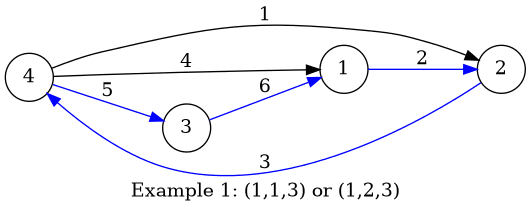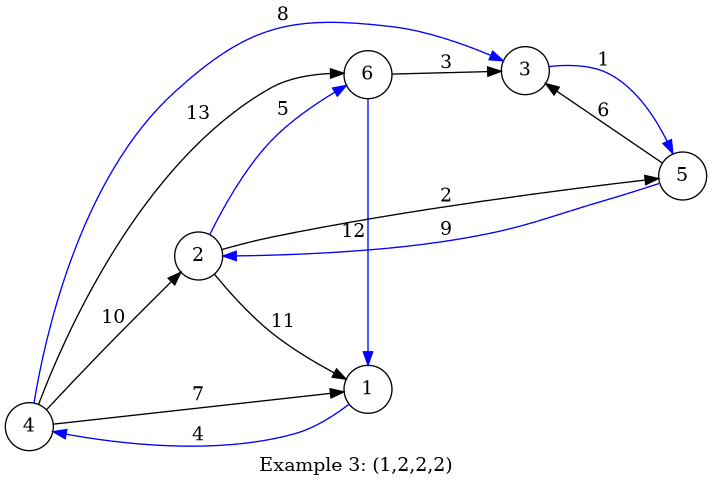Preparando MOJI
Boboniu has a directed graph with $$$n$$$ vertices and $$$m$$$ edges.
The out-degree of each vertex is at most $$$k$$$.
Each edge has an integer weight between $$$1$$$ and $$$m$$$. No two edges have equal weights.
Boboniu likes to walk on the graph with some specific rules, which is represented by a tuple $$$(c_1,c_2,\ldots,c_k)$$$. If he now stands on a vertex $$$u$$$ with out-degree $$$i$$$, then he will go to the next vertex by the edge with the $$$c_i$$$-th $$$(1\le c_i\le i)$$$ smallest weight among all edges outgoing from $$$u$$$.
Now Boboniu asks you to calculate the number of tuples $$$(c_1,c_2,\ldots,c_k)$$$ such that
The first line contains three integers $$$n$$$, $$$m$$$ and $$$k$$$ ($$$2\le n\le 2\cdot 10^5$$$, $$$2\le m\le \min(2\cdot 10^5,n(n-1) )$$$, $$$1\le k\le 9$$$).
Each of the next $$$m$$$ lines contains three integers $$$u$$$, $$$v$$$ and $$$w$$$ $$$(1\le u,v\le n,u\ne v,1\le w\le m)$$$, denoting an edge from $$$u$$$ to $$$v$$$ with weight $$$w$$$. It is guaranteed that there are no self-loops or multiple edges and each vertex has at least one edge starting from itself.
It is guaranteed that the out-degree of each vertex is at most $$$k$$$ and no two edges have equal weight.
Print one integer: the number of tuples.
4 6 3 4 2 1 1 2 2 2 4 3 4 1 4 4 3 5 3 1 6
2
5 5 1 1 4 1 5 1 2 2 5 3 4 3 4 3 2 5
1
6 13 4 3 5 1 2 5 2 6 3 3 1 4 4 2 6 5 5 3 6 4 1 7 4 3 8 5 2 9 4 2 10 2 1 11 6 1 12 4 6 13
1
For the first example, there are two tuples: $$$(1,1,3)$$$ and $$$(1,2,3)$$$. The blue edges in the picture denote the $$$c_i$$$-th smallest edges for each vertex, which Boboniu chooses to go through.

For the third example, there's only one tuple: $$$(1,2,2,2)$$$.

The out-degree of vertex $$$u$$$ means the number of edges outgoing from $$$u$$$.